Everything else was going well. I managed to get there on time and Professor David Lindenmayer was waiting out the front with a cheery grin. He had suggested we go for fish,but not too fancy. I had proposed Fich,which I’d heard was good – a takeaway joint adjoining a smart seafood restaurant in Sydney’s inner west.
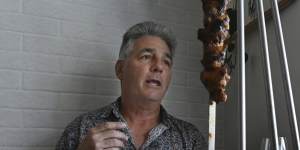
David Lindenmayer at lunch at Fich.Kate Geraghty
He looked neater than you’d expect from a bloke famous for the years he has spent deep in Australia’s oldest and wettest forests and for finding his way into the political heart of the sprawling battles fought over the industries that depend on cutting them down.
The staff at Fich in Petersham were welcoming and helpful,too. They stuck us in the corner,where it was easier to do all the potentially annoying things you have to do for this column:record conversations and arrange photos of plates and people without getting in the way of other diners or staff.
And then the menu came,and Lindenmayer made a passing comment about it,and I asked a polite question about his comment,and suddenly,we were up to our elbows in fish poo and parasites,which is not at all where you want to be over plates of seafood.
The problem was buried in the menu. “I reckon I can eat everything here except for that,” he says,pointing out some Tasmanian salmon in hiding in a poke bowl somewhere in the middle of Fich’s promising list.
Tasmanian salmon is admired by conservationists about as much wood chipping is. The problem is,Lindenmayer explains with the sort of detail you’d expect from a scientist that the salmon are raised in great big floating pens in places like Macquarie Harbour.
There,he says,great clouds of fish poo sinks,sucking the oxygen and life out of the surrounds. Native species like the Maugon Skate,already threatened,are pushed towards extinction.
He explains that these salmon-farming fish-poo death clouds can also contain tiny parasitic worms called nematodes. A quick Wiki session later in the afternoon informs me that nematodes can be found in half the world’s population and that having travelled into space in the payload of the space shuttle Columbia,they are the first known life form to survive a virtually unprotected atmospheric descent to Earth’s surface.
Still,the menu looks good.
We start with potato scallops, and which we reluctantly set aside as we wait for our photographer to record,and raw fish tacos,which we nail at once on the grounds that they would wilt unfairly in the humid late summer air.
Lindenmayer might be famous as (for a time) the nation’s single most-cited scientist (93,500) for his work on forests and regenerative farming,but he began his career in the water,and before that,he began to explore the natural world with his father,Bruce.
“He was a very,very difficult man to talk to,” recalls Lindenmayer when we get to the scallops.
The old man worked as a rocket scientist at the Woomera missile range and in Melbourne,helping to develop rockets and the propellant that would drive missiles into space or between continents. Eventually,disturbed by the machines’ violent potential,Bruce gave up the work and retrained as an economist.
Around this time,father and son began spending more time together,birdwatching in the bush. Men,says Lindenmayer,communicate better side-by-side,looking out at something rather than towards one another. “No bloke says,’Let’s go and look at the sunset;they say,‘let’s go fishing’.”
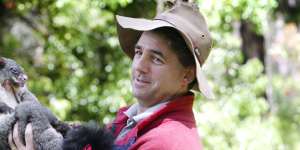
David Lindenmayer with a mountain brushtail possum in 2004.Rebecca Hallas
And so another world began to open somewhere between them. It was not just about what they saw but what they heard. Beside his father,Lindenmayer learned that the sounds birds made could reveal not just what species they were but what sex they were,what they were doing,and what was bothering them.
Those quiet moments resonated.
In the late 1970s,at school in Melbourne and then Canberra,Lindenmayer became a useful athlete,even playing for a graded football team in the Netherlands. Within a year,he realised he was not going to make it.
“I was a goalie. Everyone in the Netherlands has the perfect physique for a goalkeeper. I didn’t. I realised my hands are smaller than Donald Trump’s.” (First noted in the wild byVanity Fair editor Grayden Carter,Trump’s small hands.)
On his return to Australia,Lindenmayer dived into ecology,studying marine biology in Townsville and apprenticing himself to the famous reef ecologist Dr John “Charlie” Veron,the man who would become known as the “godfather to the corals” for his work in building the first expansive and accurate taxonomy of the Great Barrier Reef.
Lindenmayer volunteered on some of that world-leading work,trailing behind Veron underwater in Scuba gear,helping to gather and carry Veron’s coral samples. “He must have spent 10,000 hours underwater,” says Lindenmayer,who spent hundreds of hours in the sea with his mentor. He was calm,and he used less air than anyone. He must have had a set of gills or something. His breathing was incredible.”
Lindenmayer’s was not. “I found that I was more comfortable in the forest rather than in the water. I learnt I could see more in the forest than I could underwater,” he explains. “I didn’t have to concentrate on breathing.”
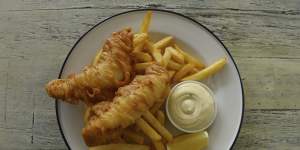
The ling fish and chips at Fich,Petersham.Kate Geraghty
Our mains have arrived. Lindenmayer has ordered fish and chips and I have opted for a fish skewer. His plate lands like proper fish and chips should. The batter has erupted volcanically around the flesh,and the chips are holding up in the heat. My fish comes in spiced cubes impaled on a fat metal skewer hanging on its own scaffolding over a warm bed of flatbread,attended bowls of pickles and sauces.
It looks much like the famous beef and pork you get at Silvas,the famous old Portuguese joint a block up the road.
Reading Lindenmayer latest book (his 49th),The Forest Wars,you don’t get any sense of comfort. Lindenmayer’s description of his early work in the 1980s building a scientific baseline of how species like,“the sweet-faced faunal emblem of Victoria”,use their habitat trees reads as deeply unpleasant.
The young scientist hauled bundles of traps and equipment,a tall ladder over one shoulder,deep into the dense understory of wattles and ferns,fallen logs and moss of Victoria’s central highlands to set traps,one for every 50 metres of forest. He soon discovered that the possums were “feisty and lighting fast” with a bite. By day’s end,his neck was garlanded with leeches,and in the shower,the water ran red “like a horror movie”.
He immediately fell in love with the work.
Lindenmayer’s work in those forests overturned how modern Australia understands them. When he began in the field,he believed,like everybody else,that trees would rejuvenate endlessly after their logging. His research shows the ecosystems they support are simply lost when they are felled.
His work reveals that rather than protecting us from fire,selective logging removes trees,drying forests out and creating highways for the infernos of the modern era. It has also shown that the animals that live in towering old trees do not move on from logged areas to reestablish themselves elsewhere but die in them when they are cut down.
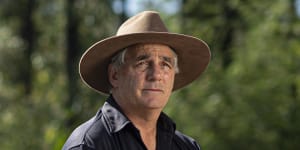
Professor David Lindenmayer in a native forest near Currawon.Wolter Peeters
To establish this,Lindenmayer and the teams he has worked with over 40-odd years spent thousands of hours in the forests.
They sat in silence,watching the animals they had carefully caught,radio-tagged and released – birds,gliders and possums – return time and again to the same hollows high in the bows of the old mountain trees.
He explains that those hollows take 150 to 200 years to develop,and they provide homes for the forest creatures not just for the tree’s 400-500-year life,should it not be burnt or felled,but for another 100 or so after the tree dies and stands still in place.
The work was mostly done at dusk,that quiet period when a silhouette of a quiet moving animal could be seen against the growing darkness of the sky.
“That must be meditative,those hours must have an impact,” I suggest as I prompt him to pull some fish from my dangling skewer contraption.
It does,he says,but insists it is data,not the quiet gloaming,that prompted him to engage in the forest wars.
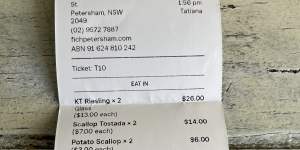
The billSupplied
Over most of his career,Lindenmayer was not an advocate for ending native forest logging in Australia but for better managing it. That view changed abruptly one morning around 15 years ago.
“I still remember the day when I realised that there were deep structural problems in the industry. It was the 13th of April in 2009 at about 9.30.”
This was two months after the Black Saturday fires had killed 173 people in what then-deputy prime minister Julia Gillard called “a tragedy beyond belief,beyond precedent and beyond words … one of the darkest days in Australia’s peacetime history”.
Lindenmayer was giving advice to Victorian government forestry officials and asked how they were going to reduce their timber take in the mountain ash and alpine ash forests,40 per cent of which had just been incinerated. There would be no change,he was told. Wood supply contracts would be met.
“I said,‘You’re going to collapse the industry because you’re going to be cutting more deeply in a severely reduced resource.’
“They said,‘Well it’s government policy,we’re not changing anything.’ And I thought,‘well,honestly,you can’t save yourself from yourself’.”
Since then,the Victorian native forest logging industry has been abandoned as unviable and VicForests,the government agency that dismissed his advice,,will be formally wound up on June 30 this year.
Lindenmeyer’s work continues,contested by the industry that lumbers indefatigably on in what is left of the old NSW and Tasmanian forests. There,the loggers compete for the big old trees with the animals that would live in them.
We linger for a coffee. Fich is out of milk,but our endlessly patient waiter nicks off next door to borrow some from the neighbour.
Get to the heart of what’s happening with climate change and the environment.